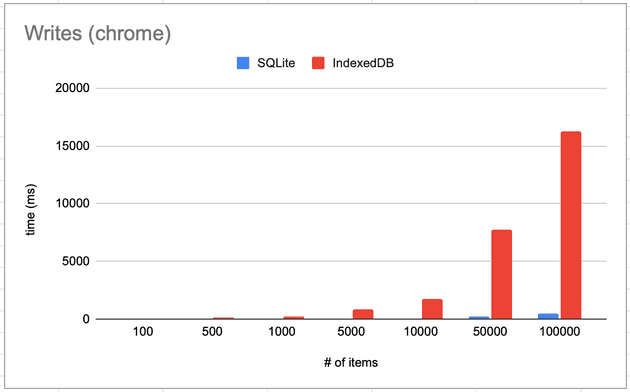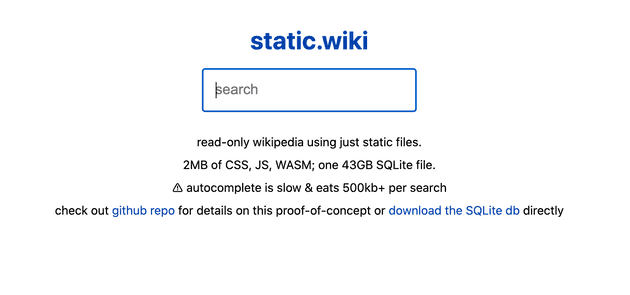With the great power and simplicity, SQLite has been underrated compared to other SQL databases like MySQL, PostreSQL, etc. Do you know SQLite is the most used database engine in the world?
SQLite is outstanding on its ways, and not “just another backend database engine”. Here are some fascinating integrations with SQLite:
Running SQLite on browser
SQLite has been ported to the browser via webassemply by sql.js! Try SQLite in your browser on SQLime.
And it’s way faster than IndexedDB - on IndexedDB
sql.js keeps the data in memory. So it make sense to be faster than IndexedDB. However, if we plug IndexedDB as the storage layer to sql.js, it can still be 10x faster than using plain IndexedDB. That’s absurd. Therefore absurd-sql was given its name.
Static SQLite server
Thanks to the design of SQLite that having an abstract layer (VFS) for OS interface, porting SQLite to another OS only means implementing the thin layer with file-system-specific operations.
What if we use http-request for SQLite’s virtual file system to access database data? Then we can create static website with SQLite as database, without fetching the whole database to the client at once!
sql.js-httpvfs builds on top of sql.js and implements a read-only HTTP-Range-request based virtual file system for SQLite, to make things possible such as this gigantic static wikipedia with 43GB SQLite data.
Backend: dead simple db backups, and cheap
SQLite’s database is just a file. Why not backup the database like a file? litestream can setup a deamon or docker container to constantly backup the database for you, on popular storage service like S3.
Supercharged static websites
To me, the most interesting thing about SQLite is the use of it on frontend. The possibilities of static website are greatly enhanced.



